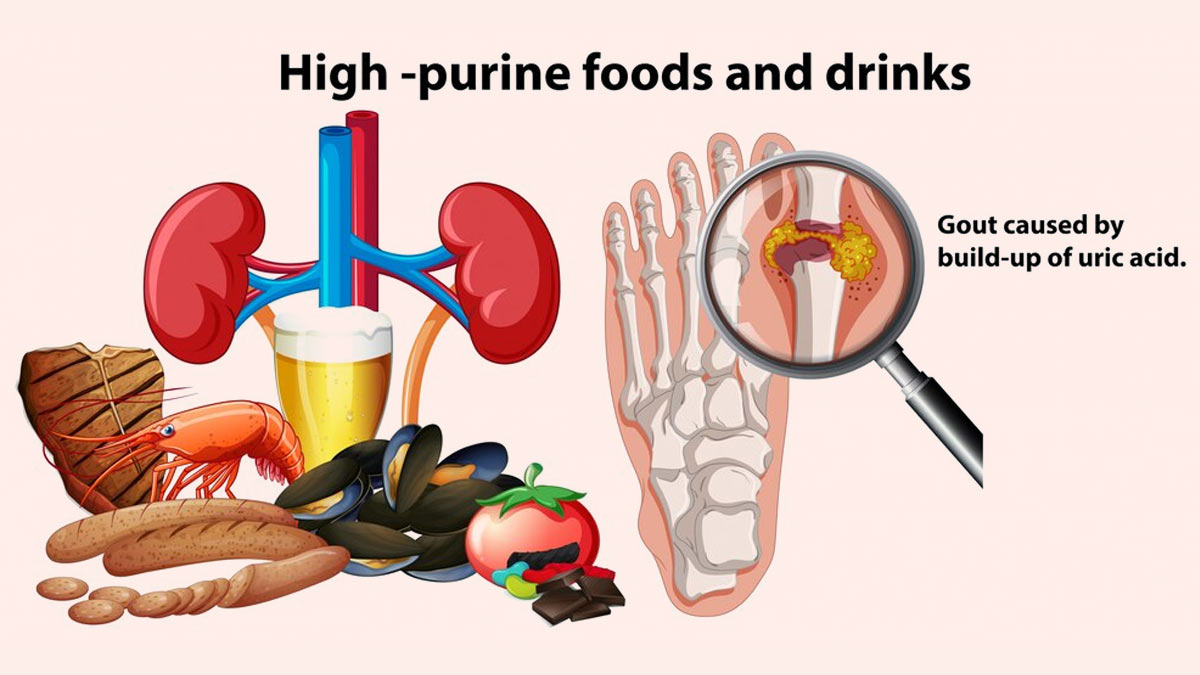
Uric acid, a byproduct formed during the breakdown of purines found in certain foods and beverages, is a vital component of our body's waste disposal system. However, an excessive buildup of uric acid in the blood can lead to hyperuricemia, a condition associated with various symptoms, particularly affecting the joints. For men, understanding the symptoms and adopting effective management strategies is crucial for maintaining optimal health.
Table of Content:-
The editorial team of Onlymyhealth got in touch with Dr Bhumesh Tyagi, General Physician - Sharda Hospital to shed some light on the symptoms and treatment of high uric acid in men. Here is what he shared with us.
Symptoms of Elevated Uric Acid Levels
The hallmark symptom of heightened uric acid levels is severe joint pain, often localised in the big toe. However, this pain can also manifest in other joints such as ankles, knees, elbows, wrists, and fingers. The onset of pain is typically sudden, intense, and debilitating, impacting daily activities.
Inflammation is another common symptom triggered by the accumulation of uric acid crystals in the joints, resulting in swelling, redness, and tenderness. This inflammation can restrict joint mobility, making simple tasks challenging and uncomfortable.
In advanced cases, uric acid crystals may accumulate under the skin, forming small, visible nodules known as tophi. Additionally, kidney stones, caused by excessive uric acid, can develop, causing excruciating pain during urination.

Management Tips for High Uric Acid in Men
1. Dietary Modifications
Reduce the intake of high-purine foods such as red meat, organ meats (kidney, liver), shellfish, and certain fish varieties like anchovies and sardines. Instead, focus on incorporating more fruits, vegetables, whole grains, and low-fat dairy products into your diet.
Also Read: Expert Shares the Vital Connection Between Folic Acid and Women's Sexual Health
2. Hydration
Drink plenty of water throughout the day to help flush out excess uric acid from the body. Adequate hydration is essential for maintaining optimal kidney function and preventing the buildup of uric acid crystals.
3. Stress Management
Elevated stress levels can contribute to increased uric acid production. Engage in stress-relieving activities such as yoga, meditation, or hobbies that bring you joy and relaxation. Prioritising mental well-being can positively impact overall health, including uric acid levels.

4. Limit Fructose Intake
High-fructose corn syrup, commonly found in processed foods and sugary beverages, can elevate uric acid levels. Minimise consumption of sweets, sugary drinks, and processed snacks to help regulate uric acid production and maintain balanced health.
5. Regular Exercise
Incorporate regular physical activity into your routine to promote circulation, joint flexibility, and overall well-being. Aim for a combination of cardiovascular exercises, strength training, and stretching to support joint health and reduce the risk of uric acid-related complications.
6. Medication Management
In severe cases or if lifestyle modifications alone are insufficient, consult a healthcare professional for appropriate medication management. Prescription medications such as urate-lowering agents or anti-inflammatory drugs may be recommended to control uric acid levels and alleviate symptoms.
7. Regular Monitoring
Keep track of uric acid levels through routine blood tests, especially if you have a history of hyperuricemia or gout. Monitoring allows for early detection of any fluctuations in uric acid levels, enabling timely intervention and management.
A Final Word
Elevated uric acid levels can pose significant health risks, particularly for men, leading to debilitating symptoms such as joint pain, inflammation, and kidney stones. By implementing effective management strategies such as dietary modifications, hydration, stress management, and regular exercise, individuals can effectively regulate uric acid levels and mitigate associated symptoms. Additionally, seeking guidance from healthcare professionals for personalised treatment plans and medication management is essential for optimal health and well-being. Taking proactive steps to address elevated uric acid levels empowers men to lead healthier, more fulfilling lives free from the limitations imposed by this prevalent condition.
Also watch this video
How we keep this article up to date:
We work with experts and keep a close eye on the latest in health and wellness. Whenever there is a new research or helpful information, we update our articles with accurate and useful advice.
Current Version
